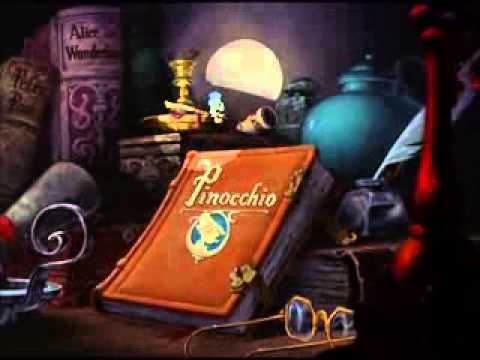In 1921, the Laugh-O-Gram Studio opened in Kansas City, Missouri. It produced animated films from the second floor of a nondescript brick building on East 31st Street — the building is still standing, and you’d never give it a second look, unless you already knew about its history.
The studio had a contract for making short cartoons called Newman Laugh-O-Grams, and the cartoons were quite popular in theaters. Then in 1922 they got a contract from Pictorial Clubs, Inc. to create six animated shorts to be shown in schools. The contract was for $11,000, but Pictorial only made a down payment of $100, then they went out of business before the films were done. Laugh-O-Gram Studio didn’t have any other source of income, and they were on the verge of closing, too. Most of the animators left.
A local dentist, though, wanted to make a film for children about dental hygiene, and he thought that guy with the movie studio in town might be looking for a project. He was, and some of the staff got back together to make Tommy Tucker’s Tooth, a ten-minute live action silent movie that you can still watch on YouTube. The studio (and the dentist) earned $500 from Tommy Tucker’s Tooth, and that money went toward making a demonstration film that combined animation and live action. It was a sort of a trailer for Alice in Wonderland, the movie they’d been thinking about making ever since the founder of Laugh-O-Gram had seen the Terrytoons studio come out with Aesop’s Fables.
They finished the demo reel, but unfortunately never found another source of income, so Laugh-O-Gram Studio filed for bankruptcy in 1923. The founder even sold off the movie camera, which gave him enough cash for a ticket to Hollywood. So, demo reel in hand, Walt Disney headed west. All he had was his Alice in Wonderland demo, and an idea based on the Laugh-O-Gram building, which wasn’t exactly a high-quality site. He’d been working evenings when he saw a mouse eating cheese out of the wastebasket. He fed the mouse, tamed him, and even taught him tricks — and later said that was the inspiration for Mickey Mouse.
But when he was on his way to Hollywood, Disney was thinking more about Alice in Wonderland, the film he really wanted to make. After he founded his Hollywood studio, he made some Alice Comedies based loosely on Wonderland, and managed to rehire some of his Kansas City animators — several of them ended up famous in the animation world, including Ub Iwerks (designed Mickey Mouse) and Friz Freling (the artist behind Looney Toons).
Disney was just setting up to make a combination live action and cartoon version of Alice in 1933 — he even got Mary Pickford to agree to play Alice — but Paramount beat him to it, releasing an all-live-action version of the same story. So Disney gave up on Alice in Wonderland (for a while) and made Snow White and the Seven Dwarves instead.
In the next few years, Mickey Mouse appeared in a couple of short films inspired by Alice in Wonderland, and in 1938 Disney bought the film rights to the illustrations in the original Alice book, and registered the title Alice in Wonderland” with the Motion Picture Association of America. The Disney studio started work on the film. But Disney didn’t like what the animators came up with, and with Pinocchio, Fantasia, and Bambi already in the works, the Alice project got shelved again.
Disney gave it another try in 1945, and this time hired Aldous Huxley to write the script. Huxley came up with a sort of “wraparound” story about the real Alice (Alice Liddell) and Lewis Carroll, and book itself was part of the plot. Disney’s first approach was, again, to make a combination live action and cartoon film, and thought Ginger Rogers would be the star.
But after they started trying to plot out the film, the live action part never seemed to work, so they went back to an animated-only production more closely based on the original book. Progress was slow, partly because the studio was also working on Cinderella, and there really weren’t enough resources to devote full attention to both projects.
Disney wanted to use as many of the poems from the book as possible, and he commissioned 30 new songs — and if you count the ones that only appear in snatches of a few seconds, 23 of them made it into the film. Alice in Wonderland still has more songs than any other Disney film.
Walt Disney’s Alice in Wonderland was finally released on July 26, 1951 — by coincidence, Aldous Huxley’s birthday (even though they never used Huxley’s script). The movie wasn’t exactly a flop, but it wasn’t particularly popular either.
By 1954, though, Disney had his own TV show, Walt Disney’s Disneyland, and the very second episode was a version of Alice edited down to one hour. It got a much better reception than it did the first time, even though it was on black and white TV.
They rebroadcast the TV version a couple of times, and noticed that by the 1970s, Alice in Wonderland had become the most-rented film in a number of cities (you could rent 16mm Disney films in those days for private functions and parties). So in 1974, the film was re-released to theaters. It was even more popular, and led to a third release in 1981.
It took Walt Disney almost thirty years to finally make Alice in Wonderland, but you can tell he was thinking about it the whole time. Pinocchio was released 11 years earlier, in 1940, but if you look at the bookshelf in the background in several scenes, you’ll see a copy of the book Alice in Wonderland — and Peter Pan, too!

